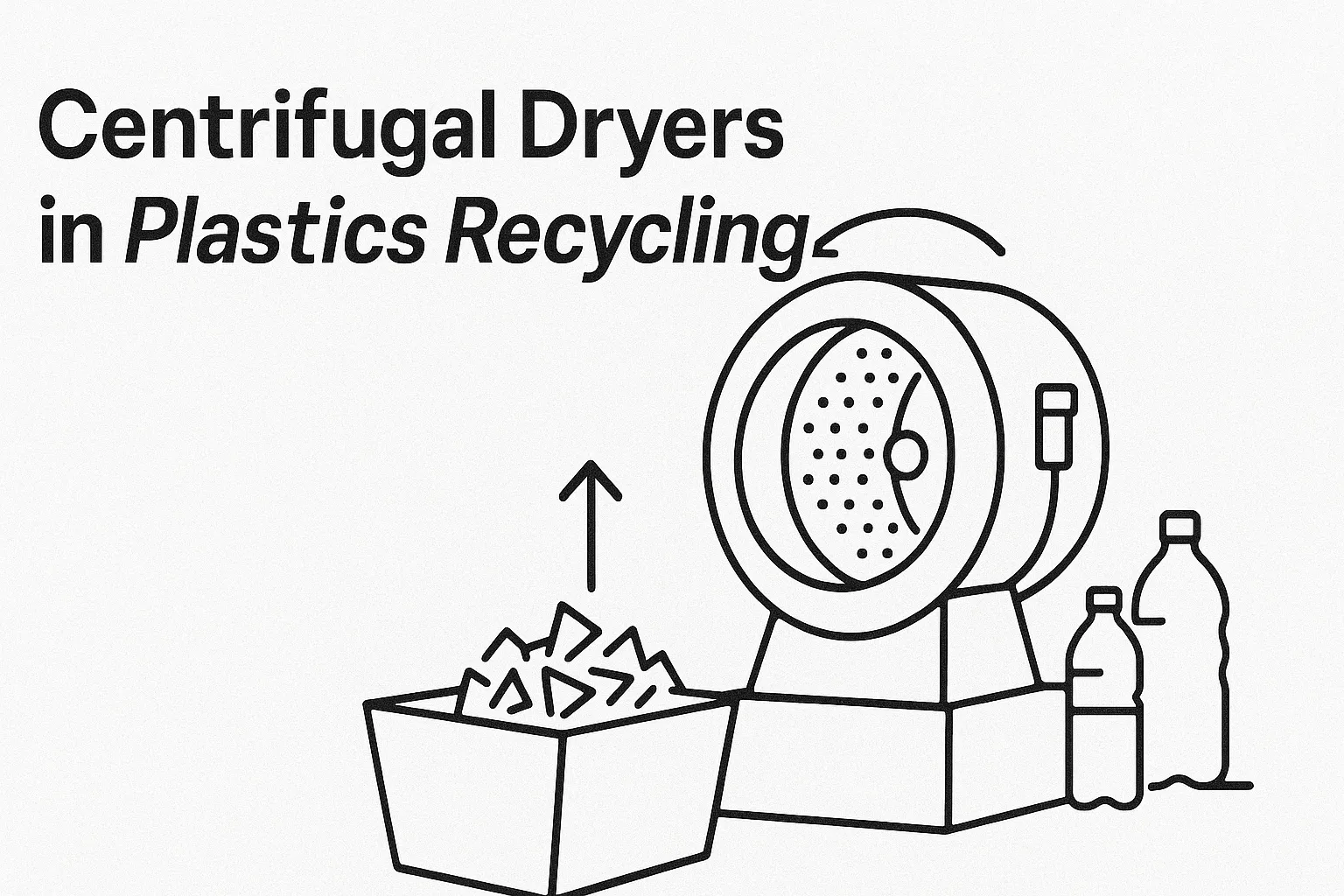In today’s rapidly evolving recycling landscape, professionals and investors alike are continuously exploring technologies that enhance sustainability and efficiency. Among these innovations, centrifugal dryers have emerged as indispensable tools, significantly boosting the quality and productivity of plastics recycling. This comprehensive guide will explore the practical benefits, operational mechanics, and investment advantages of essiccatori centrifughi.
Comprensione Essiccatori centrifughi: How They Work
Centrifugal dryers, commonly known as spin dryers or dewatering machines, utilize high-speed centrifugal force to efficiently remove water from plastic materials such as flakes, granules, and films. Inside the dryer, plastic materials are spun rapidly, forcing water outward through a perforated screen, while retaining the plastics due to their higher mass.
This mechanical dewatering process plays a crucial role in preparing plastics for subsequent recycling steps, including extrusion, molding, and pelletizing, ultimately ensuring higher-quality end products.
Why Drying Matters: The Critical Step in Plastics Recycling
Moisture control is a vital element in plastics recycling. After plastics undergo thorough washing to eliminate contaminants, they retain significant moisture. Excessive moisture can lead to processing issues like hydrolysis, weakening the plastic’s mechanical strength and causing defects in finished products.
Effective drying, especially via centrifugal dryers, prevents these issues, safeguarding the integrity and quality of recycled materials. Proper moisture management ensures recycled plastics meet stringent industry standards, making them suitable for high-value applications.
Practical Benefits of Centrifugal Dryers
High Efficiency and Rapid Processing
Centrifugal dryers deliver impressive throughput, making them ideal for industrial-scale operations. Their capacity to handle large volumes quickly and effectively significantly boosts production efficiency, a key consideration for investors seeking scalable technologies.
Cost and Energy Efficiency
Compared to thermal drying methods, centrifugal dryers use mechanical force rather than heat, substantially reducing energy consumption. Lower operational costs result from this energy-efficient process, enhancing profitability and sustainability. Investors can appreciate reduced operating expenses, while environmental advocates value the minimized carbon footprint.
Enhanced Quality of Recycled Plastics
By efficiently removing moisture, centrifugal dryers preserve the mechanical properties and structural integrity of plastics. This quality assurance means recycled plastics can be confidently used in more demanding applications, increasing their market value and competitiveness.
Comparative Analysis: Centrifugal Dryers vs. Thermal Dryers
Centrifugal dryers are typically used as an initial drying step. They dramatically reduce moisture content, often to levels between 10% and 20%, depending on the material type. This initial mechanical drying significantly reduces the load on subsequent thermal dryers, which may be required for further moisture reduction in hygroscopic plastics such as PET.
By combining centrifugal and thermal drying methods, recycling facilities achieve maximum efficiency, significantly lowering energy usage and costs compared to standalone thermal drying.
Performance Insights: Material-Specific Considerations
The effectiveness of centrifugal dryers can vary based on the plastic type:
- Rigid Plastics (PET, PP flakes): Typically achieve moisture levels below 2%, sometimes even under 1% with advanced centrifugal dryers.
- Soft Plastics (Films): Standard models usually achieve moisture contents around 20%. However, specialized horizontal dryers can reduce moisture content to below 12%.
Choosing appropriate centrifugal dryer models based on the specific recycling needs ensures optimal performance and efficiency.
Economic and Environmental Advantages
The economic and environmental impacts of centrifugal dryers are intertwined:
- Economically, their low energy use and high throughput offer significant operational cost savings, increasing profitability and enabling recycled plastics to compete effectively with virgin materials.
- Environmentally, reducing reliance on heat-based drying methods cuts energy consumption and lowers greenhouse gas emissions, aligning perfectly with global sustainability goals and circular economy initiatives.
Investment Perspectives: Future Outlook
The market demand for high-quality recycled plastics is booming, driven by stricter regulatory frameworks, growing consumer awareness, and corporate sustainability targets. Centrifugal dryers represent a forward-looking investment, combining proven technology with substantial efficiency gains. Investing in this technology positions companies competitively, driving both sustainability and profitability.
Conclusion: Essential Equipment for Sustainable Plastics Recycling
Centrifugal dryers are more than just equipment—they are essential tools for any modern plastics recycling operation. Their unparalleled efficiency, cost-effectiveness, and significant role in ensuring quality make them indispensable. For industry professionals and discerning investors, integrating centrifugal dryers into recycling processes is a strategic move toward sustainable growth and innovation in the recycling sector.
Explore this technology today and join the movement towards a cleaner, more sustainable future.



